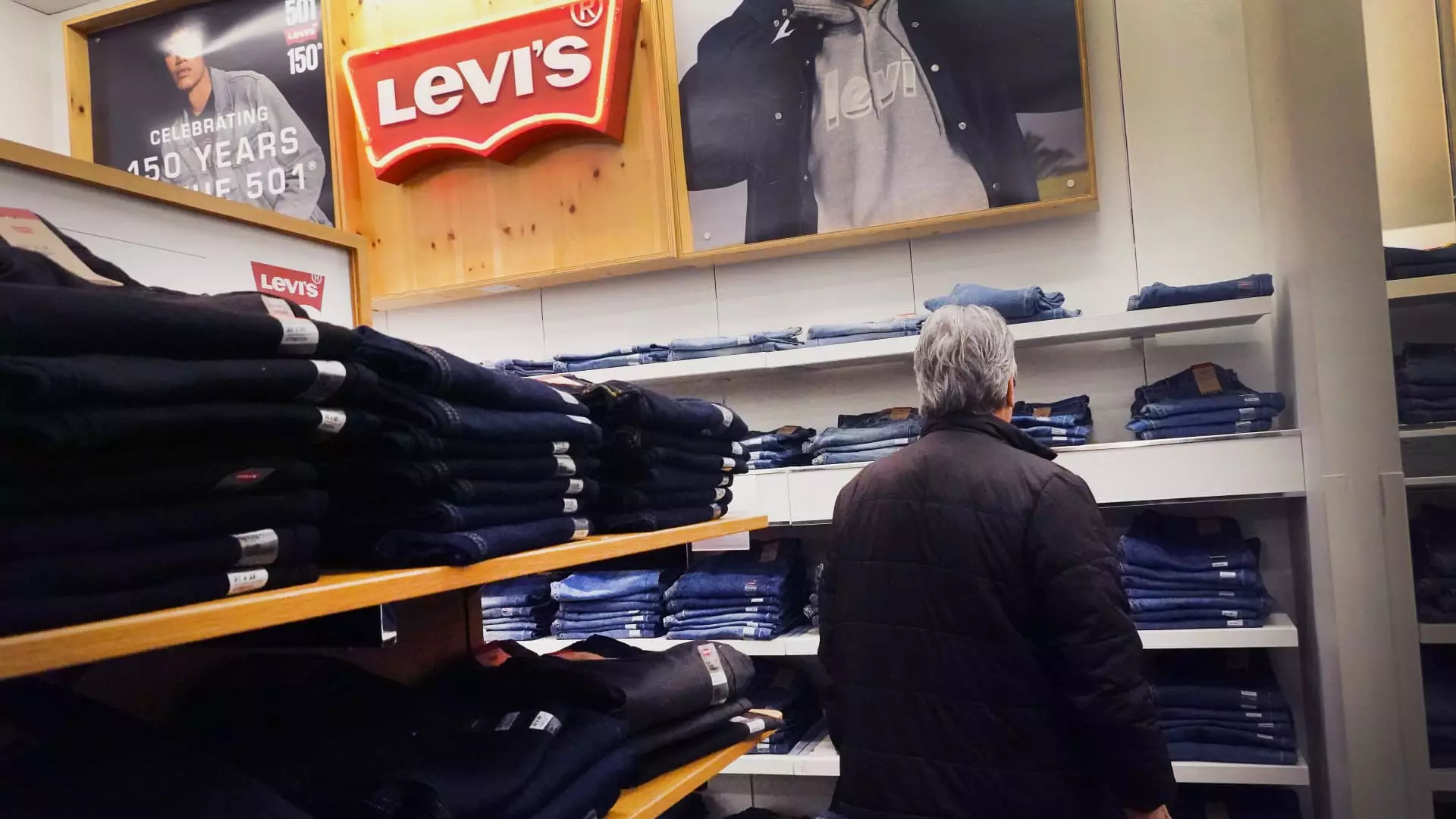Levi Strauss, the iconic denim brand, recently faced a challenging outlook for its current fiscal year, reflecting broader economic concerns and internal restructuring initiatives. By analyzing the company’s financial performance, strategic shifts, and market dynamics, we can assess how Levi is maneuvering through a turbulent retail environment.
On Wednesday, Levi Strauss unveiled guidance that suggests a dip in sales for the upcoming fiscal year. The projected decline of 1% to 2% starkly contrasts with the anticipated growth of 3.7%, underscoring the financial challenges the company is experiencing. Factors such as unfavorable currency exchange rates and a reduction in the number of selling weeks complicate its revenue generation. Furthermore, the downturn extends to specific segments like Denizen and footwear, straining overall profitability.
Investors responded to the bleak forecasts with caution, pushing shares down by approximately 6% in after-hours trading. Levi’s CEO, Michelle Gass, attributed the revenue decrease more to external factors than a reduction in consumer demand. She emphasized that the company’s sales challenges are primarily influenced by currency fluctuations and the effects of divested operations.
Despite the somber outlook, Levi Strauss concluded its last fiscal quarter with commendable performance metrics. In the fiscal fourth quarter, Levi exceeded Wall Street expectations with adjusted earnings per share at 50 cents—slightly above the anticipated 48 cents—alongside a revenue of $1.84 billion compared to the expected $1.73 billion. These financial results indicate resilience within the company amidst broader market challenges.
Notably, Levi’s reported net income rose significantly year-over-year, evidencing improved efficiency and sales strategies. The company’s adjusted net income increased to $202 million, reflecting a robust 12% revenue growth from the previous year, bolstered by a notable 8% organic sales increase once extraneous factors were accounted for.
Michelle Gass, who took the helm as CEO just over a year ago, has initiated a series of strategic changes aimed at repositioning Levi for sustainable growth. Central to her strategy has been the focus on enhancing profitability and diversifying the company’s customer base. Gass has implemented decisive actions to phase out underperforming business segments while investing in high-margin sales both online and through physical retail channels.
An important highlight of Gass’s strategy has been the brand’s collaboration with pop icon Beyoncé, which has helped reinvigorate consumer interest and drive demand. The positive impact of celebrity endorsements is palpable, demonstrating how cultural influences can create a significant boost for legacy brands like Levi Strauss.
Traditionally perceived as a male-oriented brand, Levi Strauss has shifted its focus to capturing a larger share of the female demographic. Currently, women’s apparel comprises about 36% of Levi’s overall portfolio, a figure Gass aims to elevate to 50% over time. This strategic pivot is not only responsive to market trends but also reflects a broader understanding of consumer spending behaviors, as women tend to invest more frequently in fashion than men.
To attract female customers, the company has broadened its product line to include an array of styles, such as loose-fit jeans and trendy tops. This product diversification aims to resonate with modern women’s preferences, positioning Levi to stand out in a crowded and competitive marketplace.
The retail landscape has been tumultuous, especially in light of proposed tariffs and evolving consumer preferences. Levi Strauss’s Finance Chief, Harmit Singh, addressed concerns regarding sourcing practices and pricing strategies in the face of tariff implications. By ensuring minimal dependence on countries affected by potential tariff hikes, such as China and Mexico, Levi aims to shield itself from drastic increases in consumer pricing.
Singh also assured stakeholders of the company’s commitment to mitigating costs and managing their supply chain judiciously. The intention is to prevent unnecessary burden on consumers while prioritizing the structural health of the business.
Levi’s acquisition of Beyond Yoga has been another area of focus that has produced mixed results. Despite incurring substantial impairment charges since its purchase, the athleisure market’s continuous growth provides a silver lining. Singh acknowledged that the company’s initial growth expectations for Beyond Yoga may have been overly ambitious, yet he expresses optimism under the current leadership of Nancy Green, a seasoned executive with a history of success in the athleisure sector.
As the athleisure category burgeons, Levi’s strategic direction will be closely monitored as it strives to capitalize on this growth potential while establishing Beyond Yoga as a significant player in the market.
While Levi Strauss contends with current fiscal challenges, its proactive measures, strategic shifts under new leadership, and efforts to attract a diverse clientele position it favorably for long-term recovery. The brand’s resilience demonstrated by its recent financial performance, coupled with strategic investments and celebrity partnerships, showcases its adaptability and potential for growth even amid a rapidly evolving retail landscape. If managed wisely, Levi Strauss can navigate these complexities and emerge stronger in the competitive apparel market.

